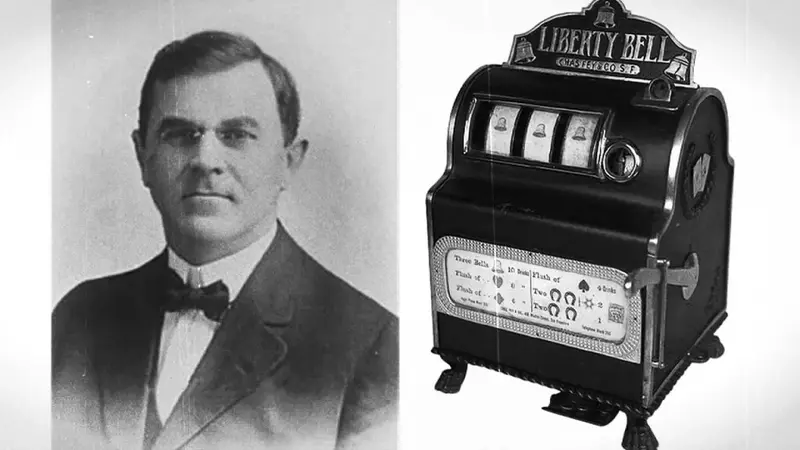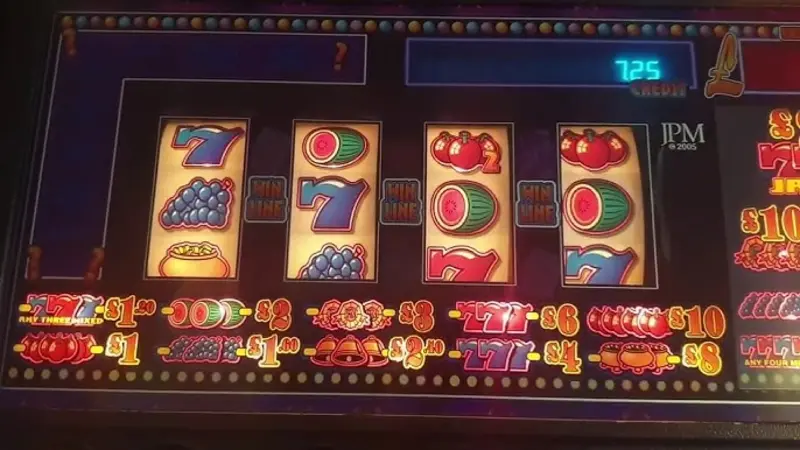Slot machines are among the most recognizable and widely played forms of gambling around the world.
Their bright lights, spinning reels, and instant gratification have made them staples in casinos, both physical and digital.
This article explores the history of slot machines, tracing their evolution from simple mechanical devices to sophisticated video and online games.
Understanding the journey of slot machines provides insight into how technology, law, and entertainment have shaped one of the most enduring forms of gaming.
The History of Slot Machines
What Are Slot Machines?
A slot machine is a gambling device that generates random combinations of symbols on spinning reels. When specific combinations appear, the player receives a payout.
Originally operated with a lever, modern machines now function using electronic or digital systems.
There are many different types of slot machines available, ranging from classic 3-reel models to advanced video slots with multiple paylines, bonus features, and interactive gameplay.
1. The Origins: Liberty Bell (1895)

The history of slot machines officially began in San Francisco, California, in 1895, when Charles Fey, a German-American mechanic, created what is now recognized as the first true slot machine—the Liberty Bell.
At the time, most gambling devices required manual intervention for payouts, often involving attendants or physical tokens.
Fey’s invention was groundbreaking because it introduced an automatic payout mechanism, streamlining the entire gambling process into a self-contained device.
Design and Functionality
The Liberty Bell was built with a focus on mechanical simplicity and operational efficiency. Here are its defining features:
- Three mechanical spinning reels:
Each reel rotated independently and came to a stop in sequence, displaying a random combination of symbols. - Five distinctive symbols:
Liberty Bell (the highest-paying symbol), Heart, Spade, Diamond, Horseshoe - Automatic payout mechanism:
The machine could identify winning combinations, especially three Liberty Bells in a row, which triggered the top payout of 50 cents—a significant sum at the time. - Lever-activated gameplay:
Operated by pulling a side lever, which earned early machines the nickname “one-armed bandits.”
Materials and Aesthetics
- Constructed with cast iron housing
- Compact and durable design
- Coin slot for nickel-based play
- A payout tray at the bottom for dispensing coins
The combination of form and function gave the Liberty Bell both durability and appeal.
It could easily be placed in small establishments like saloons, cigar shops, barber shops, and bowling alleys, where patrons could engage in casual, low-stakes gambling.
Impact and Legacy
The Liberty Bell was more than just a machine—it was a technological and cultural milestone. It changed how people interacted with games of chance by:
- Removing the need for attendants to verify and distribute winnings
- Introducing an intuitive, repeatable gameplay experience
- Making gambling more accessible and widespread in public venues
The immense popularity of the Liberty Bell inspired imitators and competitors. However, due to Fey’s limited manufacturing capacity and lack of a patent (due to the legal status of gambling), his machine was widely copied—setting off a wave of mechanical slot machine production in the early 20th century.
Today, the original Liberty Bell machine is considered a rare collector’s item and can be viewed at several gaming museums, including a replica on display in Las Vegas casinos—a testament to its enduring legacy in the history of slot machines.
2. Fruit Machines and Legal Circumvention

As the history of slot machines progressed into the early 20th century, evolving legal restrictions in the United States began to challenge their growing popularity.
In many jurisdictions, gambling was either heavily regulated or outright prohibited.
This legal environment prompted manufacturers to modify both the design and the purpose of slot machines—leading to the emergence of what became known as fruit machines.
Adapting to Legal Pressure
Authorities at the time imposed strict bans on monetary gambling, especially in public places.
To navigate these laws, slot machine manufacturers devised a clever workaround: instead of paying out cash, the machines would dispense non-monetary prizes, such as chewing gum or candy.
This reclassification turned the devices into “trade stimulators”, which were considered legal in many areas.
Changes in Symbol Design
To align with their new purpose, the symbols on the machine reels were also altered.
The familiar symbols associated with card games (such as spades or diamonds) were replaced with brightly colored fruit icons, each corresponding to a specific gum or candy flavor.
Common fruit symbols and their meanings:
- Cherry – Cherry-flavored gum
- Lemon – Lemon-flavored gum
- Orange – Orange-flavored gum
- Plum – Grape or plum-flavored gum
- Bar – Originally derived from the Bell-Fruit Gum Company’s logo
The BAR symbol, now ubiquitous in slot machines, originated from the Bell-Fruit Gum Company, one of the first to mass-produce these fruit machines.
Their company logo—a stylized bar of gum—was adapted as a reel symbol and remains in use today.
Mechanical and Operational Features
While the payout structure changed, the mechanical principles remained similar to those introduced by Charles Fey’s Liberty Bell:
- Three-reel configurations
- Lever activation
- Coin operation
- Visual payout displays
However, instead of dispensing coins, the machines rewarded players with vouchers, tokens, or even dispensed product directly—sometimes gum would fall into a tray beneath the machine as a “prize.”
Public Reception and Popularity
Despite the shift away from cash winnings, fruit machines remained highly popular, especially in:
- Penny arcades
- Confectionery stores
- Cigarette shops
- British pubs (where the term “fruit machine” became especially widespread)
In fact, these adaptations helped slot machines expand their audience beyond traditional gambling environments.
They were now viewed more as entertainment devices, appealing to a broader and often younger demographic.
Legacy and Influence
The fruit machine era played a crucial role in the continued survival of slot machines during periods of anti-gambling sentiment. It also introduced:
- The concept of symbolic themes in slot design
- Use of non-cash rewards
- Creative workarounds to comply with legal constraints
These innovations laid the groundwork for future developments in theme-based slot gaming, which would later be amplified in video and online slot formats.
By creatively navigating legal boundaries, fruit machines ensured that the history of slot machines continued to evolve—adapting to societal changes while maintaining their core appeal as games of chance and reward.
